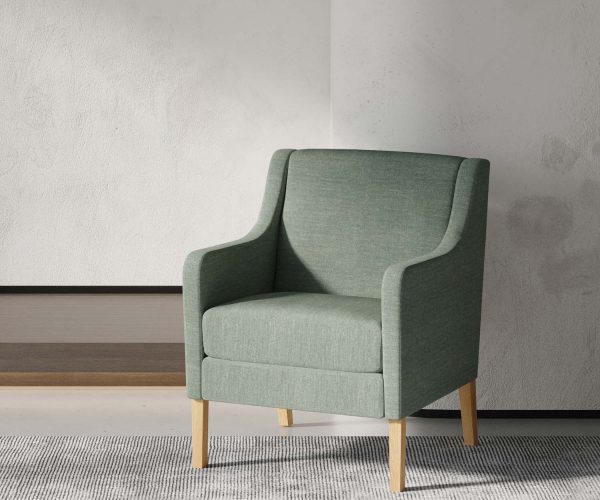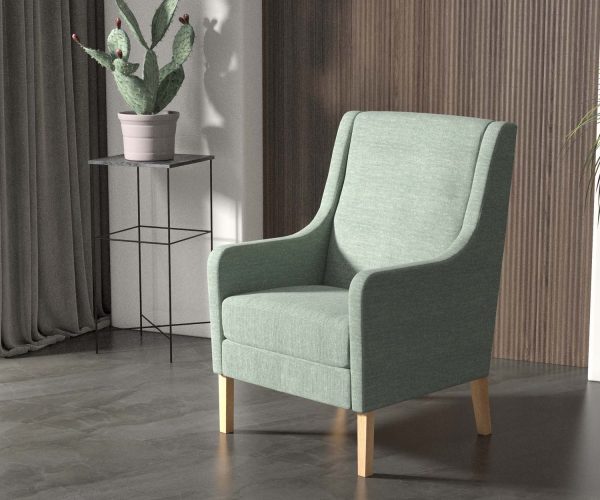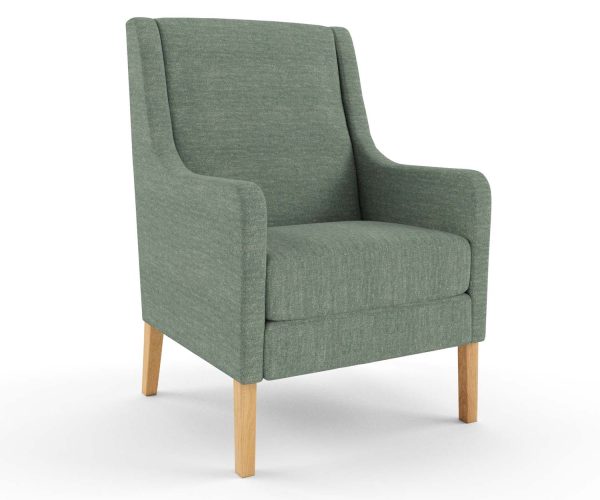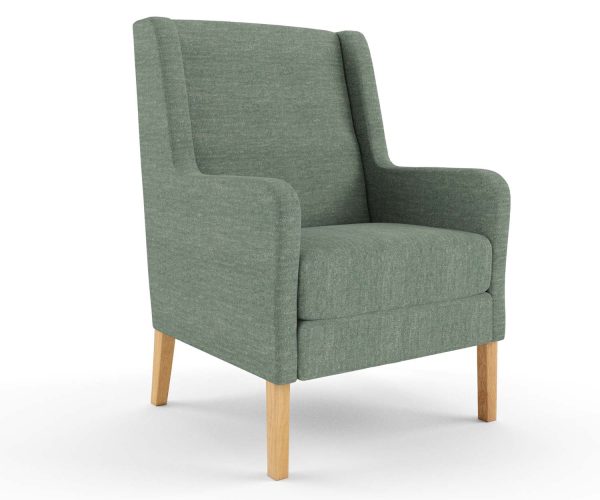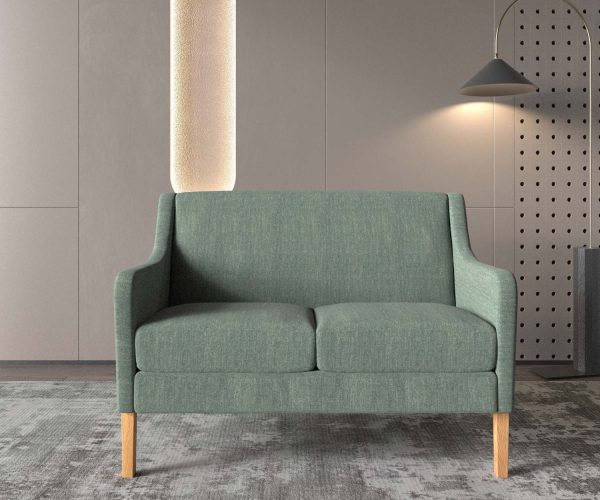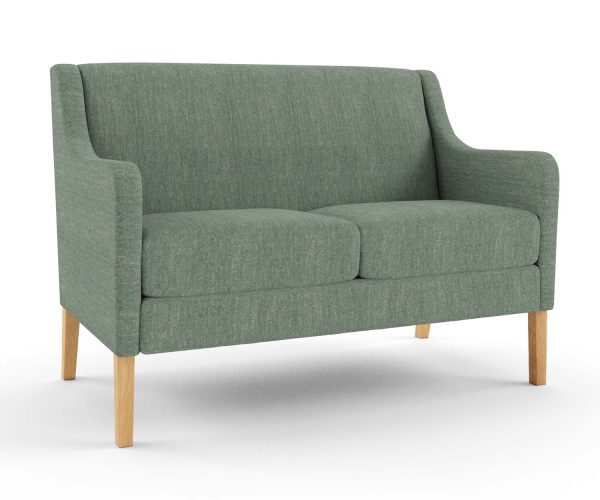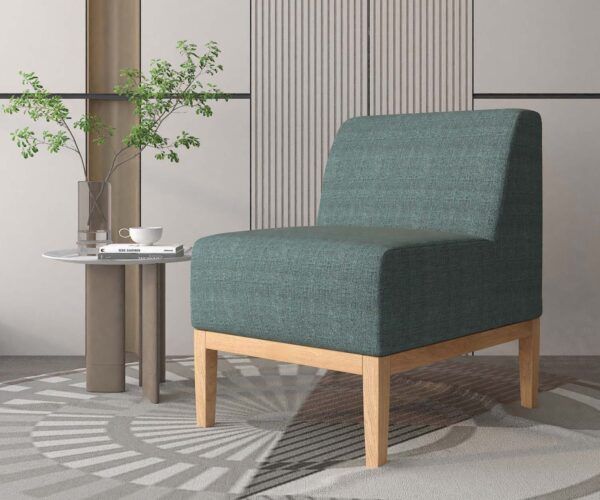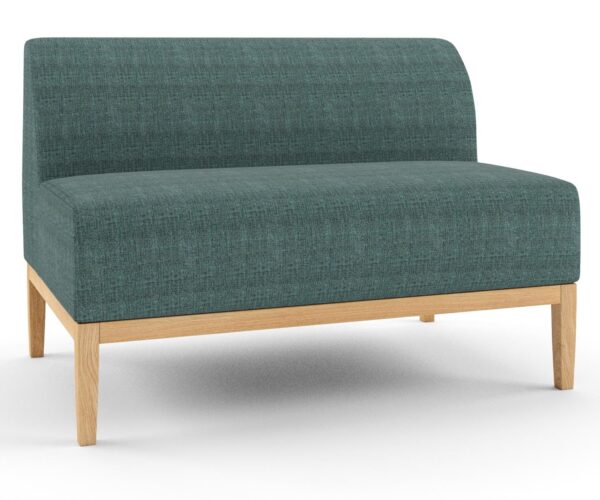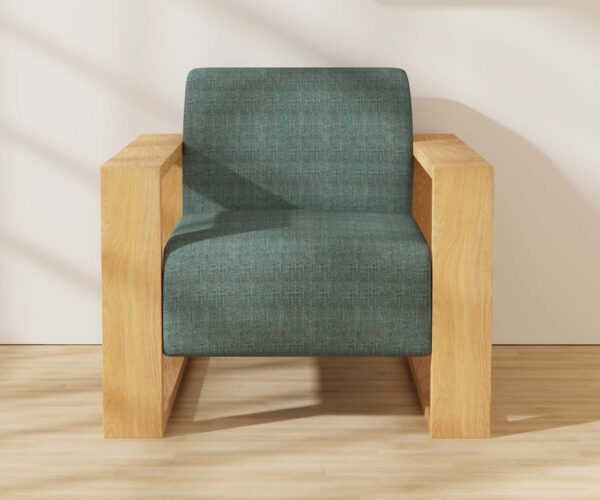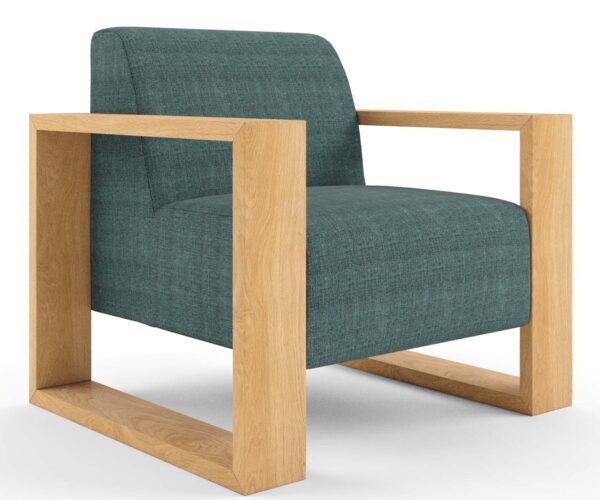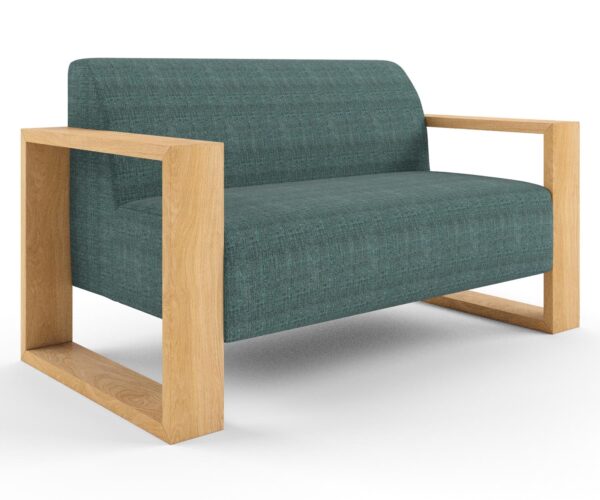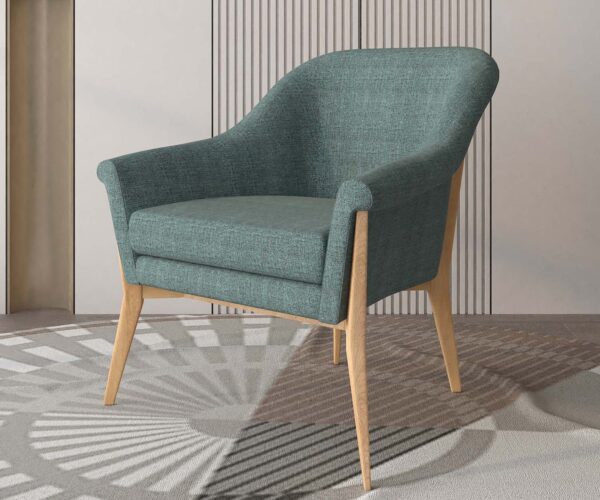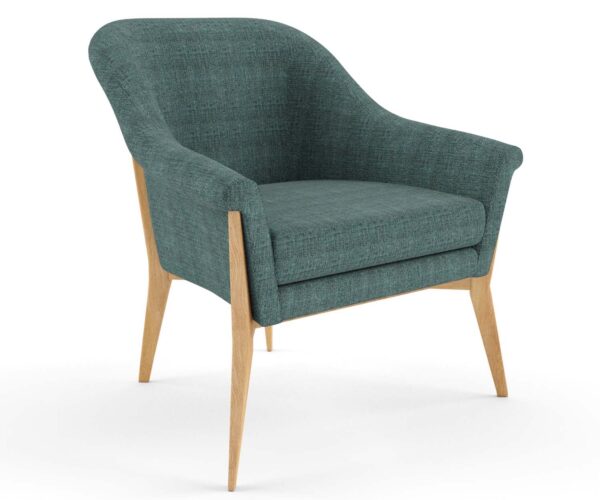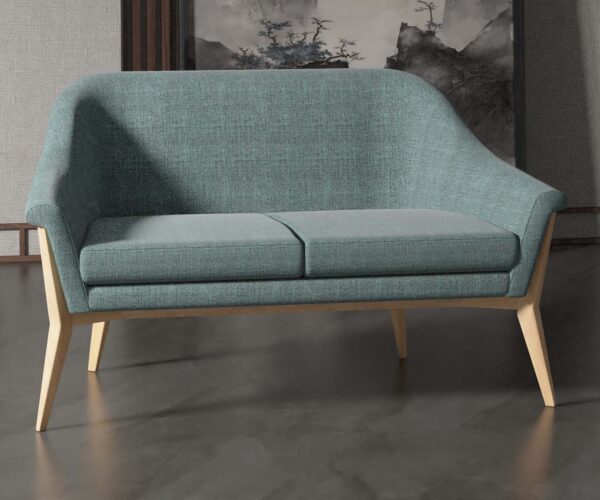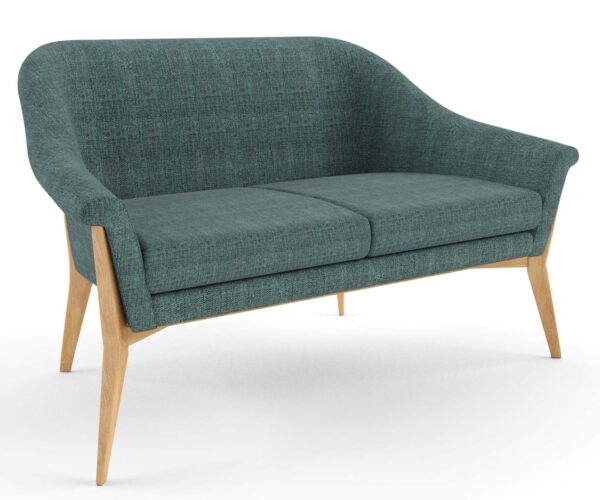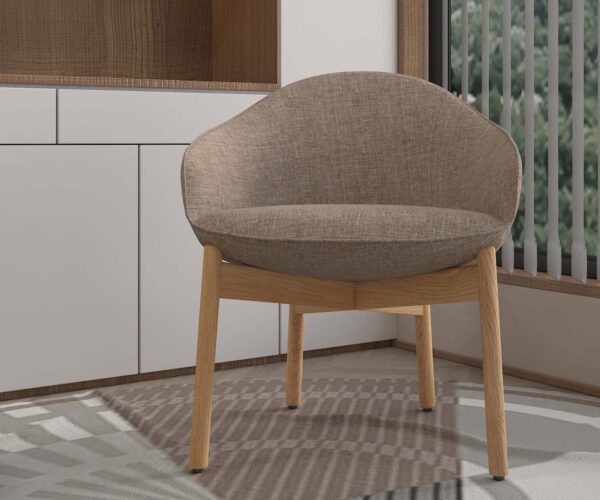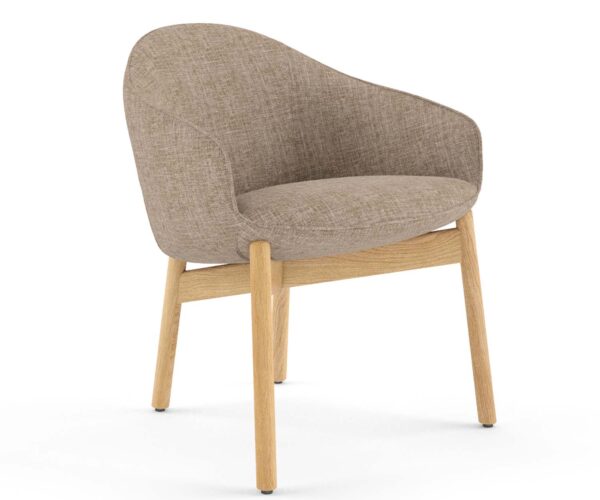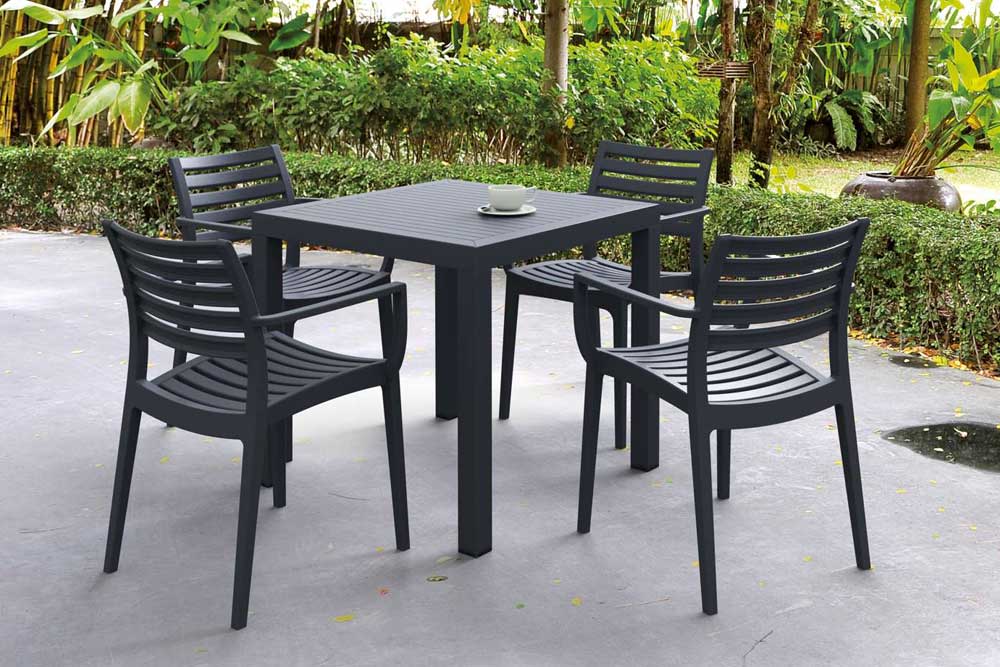Furniture Manufacturer Secrets: 6 Strategies to Stretch Your Aged Care Procurement Budget Without Sacrificing Quality
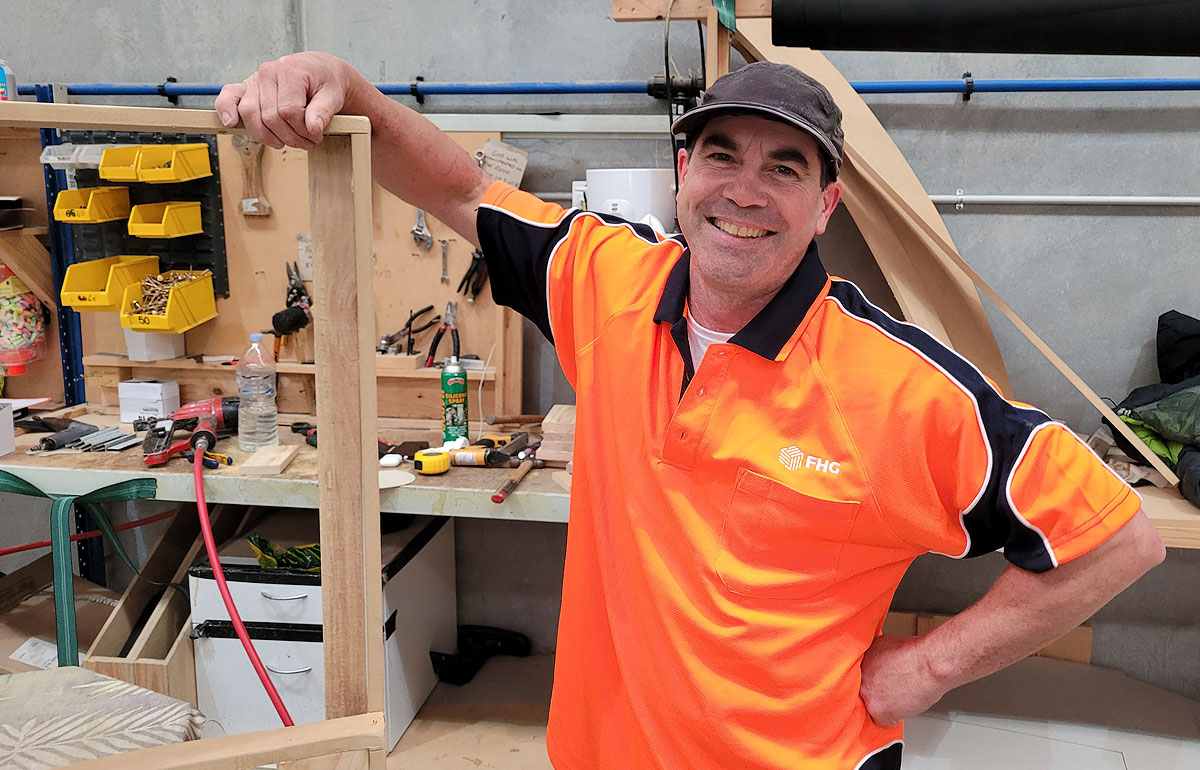
When it comes to furnishing Australian aged care facilities, balancing budget constraints with the need for quality, durability, and comfort is a top priority. As a facility manager or procurement officer, you understand the importance of making every dollar count while ensuring that residents feel safe, comfortable, and well-cared-for in their living environment. Fortunately, there are strategies you can employ to stretch your aged care procurement budget without compromising on the quality of furniture.
In this article, we’ll unveil six insider strategies shared by furniture manufacturers to help you optimize your aged care furniture procurement budget.
1. Partner with Reputable Australian Manufacturers: For quality, reliability and customer satisfaction
Partnering with reputable furniture manufacturers is a cornerstone strategy for optimizing your aged care procurement budget while ensuring quality, reliability, and customer satisfaction. Here’s an in-depth exploration of why this partnership is crucial and how to make the most of it:
Why Partnering Matters:
- Quality Assurance: Reputable manufacturers have earned their status through a consistent commitment to quality craftsmanship, materials, and design. By partnering with such manufacturers, you can trust that the furniture you procure meets stringent Australian standards for durability, safety, and performance, reducing the risk of premature wear, damage, or malfunction.
- Product Expertise: Reputable manufacturers specialize in designing and producing furniture specifically tailored to aged care environments. They possess in-depth knowledge of the unique needs, challenges, and regulations governing aged care facilities, allowing them to develop innovative solutions that enhance resident comfort, mobility, and well-being.
- Customized Solutions: Partnering with reputable manufacturers opens the door to personalized service and customized solutions tailored to your facility’s requirements. Whether you need furniture with specific dimensions, features, or finishes, reputable manufacturers have the expertise and flexibility to accommodate your requests and deliver bespoke solutions that align with your vision and budget.
- Reliability and Consistency: Consistency is key when furnishing aged care facilities with multiple rooms, common areas, and outdoor spaces. Reputable manufacturers adhere to strict quality control processes and production standards to ensure consistency in product quality, appearance, and performance across all furniture items. This reliability minimizes variations and ensures a cohesive, harmonious aesthetic throughout your facility.
- Long-Term Support: Building a partnership with a reputable manufacturer establishes a foundation for long-term collaboration and support. From initial consultation and design to delivery, installation, and after-sales service, reputable manufacturers prioritize customer satisfaction and strive to exceed your expectations at every stage of the procurement process. Their dedication to customer service and ongoing support gives you peace of mind knowing that you have a trusted partner by your side for the duration of your facility’s lifecycle.
Maximizing Your Partnership:
- Research and Due Diligence: Before entering into a partnership, conduct thorough research and due diligence to evaluate the reputation, track record, and credentials of prospective manufacturers. Look for manufacturers with a proven history of excellence, positive customer reviews, and industry certifications attesting to their commitment to quality and compliance.
- Collaborative Planning: Engage in collaborative planning sessions with your chosen manufacturer to articulate your facility’s specific needs, preferences, and budgetary constraints. Clearly communicate your expectations, timelines, and project requirements to ensure mutual understanding and alignment throughout the procurement process.
- Transparent Communication: Maintain open, transparent communication with your manufacturer to address any questions, concerns, or changes that may arise during the procurement process. Regular communication fosters a spirit of collaboration, trust, and accountability, allowing both parties to work together effectively towards achieving shared goals and objectives.
- Explore Value-Added Services: Take advantage of value-added services offered by your manufacturer, such as design consultation, space planning, product customization, and project management assistance. These services enhance the overall value proposition of your partnership and help streamline the procurement process, from concept to completion.
- Long-Term Relationship Building: Cultivate a long-term relationship with your manufacturer based on mutual respect, professionalism, and trust. Foster ongoing communication, feedback, and collaboration to continuously improve and refine your facility’s furniture solutions, adapt to changing needs, and capitalize on emerging trends and innovations in aged care furniture design and technology.
2. Prioritize Multi-Functional Furniture: Serving multiple purposes to maximize your procurement budget
Opting for multi-functional furniture pieces can help you maximize the value of your procurement budget. Choose items that serve multiple purposes or have built-in storage capabilities to optimize space utilization within your facility. Here’s some ideas to prioritize multi functional furniture in aged care procurement:
- Opt for adjustable-height beds with built-in storage drawers to maximize space utilization in resident rooms.
- Consider modular seating arrangements that can be reconfigured to accommodate different activities and group sizes in common areas.
- Choose lift chairs that also function as recliners to provide residents with comfort and mobility assistance in one versatile piece of furniture.
- Explore bedside tables with integrated overbed tables or tray tables that offer convenient surfaces for dining, reading, or working from bed.
- Select dining tables with fold-down or extendable leaves to accommodate varying numbers of residents during meal times and social gatherings.
- Invest in seating options with hidden storage compartments, such as ottomans or benches, to discreetly store personal belongings and minimize clutter in communal spaces.
- Prioritize furniture pieces with ergonomic designs and adjustable features, such as height-adjustable desks or chairs with lumbar support, to promote resident comfort and well-being.
- Incorporate convertible furniture solutions, such as sofa beds or wall beds, that serve dual purposes as seating and sleeping accommodations to optimize space in multi-use areas.
- Consider furniture with built-in mobility aids, such as grab bars or transfer handles, to provide residents with additional support and assistance in navigating their living environment.
- Evaluate the versatility and adaptability of furniture options to ensure they can meet the evolving needs and preferences of residents over time, from independent living to assisted care.
3. Embrace Value Engineering: Working closely with your furniture manufacturer to achieve significant cost reductions
Value engineering involves analyzing the cost-effectiveness of furniture designs and materials to identify opportunities for cost savings without compromising quality or performance. Work closely with your furniture manufacturer to explore alternative materials, finishes, and construction methods that offer comparable durability and functionality at a lower cost. By applying value engineering principles, you can achieve significant cost reductions while maintaining the integrity of your aged care furniture procurement.
Here’s some ideas for embracing value engineering in aged care furniture procurement:
- Material Selection: Explore alternative materials that offer comparable durability and performance at a lower cost. Consider options such as high-quality laminates, engineered woods, or durable plastics that provide the desired aesthetics and functionality while minimizing expenses.
- Simplified Designs: Opt for streamlined designs that reduce complexity and material usage without compromising on functionality or comfort. Look for furniture with clean lines, minimalistic detailing, and modular components that can be assembled efficiently and cost-effectively.
- Standardization: Standardize furniture components, dimensions, and finishes across multiple pieces to streamline production processes and reduce manufacturing costs. By selecting standardized options, you can benefit from economies of scale and volume discounts without sacrificing customization or quality.
- Component Optimization: Analyze individual furniture components and features to identify opportunities for cost savings through optimization. This may involve reevaluating hardware, upholstery, or decorative elements to determine if more cost-effective alternatives are available without compromising performance or aesthetics.
- Manufacturing Efficiency: Collaborate with manufacturers to identify opportunities for process improvements and efficiency gains that can reduce production costs. Explore lean manufacturing principles, automation technologies, and supply chain optimizations to streamline operations and minimize waste while maintaining product quality.
- Lifecycle Cost Analysis: Conduct lifecycle cost analyses to assess the total cost of ownership for different furniture options over their anticipated lifespan. Consider factors such as initial purchase price, maintenance expenses, repair costs, and replacement frequency to identify the most cost-effective solutions that offer the best long-term value.
- Value-Added Features: Prioritize value-added features and functionalities that enhance the utility and versatility of furniture without significantly increasing costs. Look for innovative design elements, ergonomic enhancements, or integrated storage solutions that provide tangible benefits to residents while maximizing overall value for your procurement budget.
- Supplier Collaboration: Collaborate closely with furniture manufacturers and suppliers to brainstorm cost-saving ideas and creative solutions. Engage in open dialogue, share feedback, and leverage their expertise to explore alternative approaches and identify opportunities for value engineering throughout the procurement process.
- Continuous Improvement: Embrace a culture of continuous improvement and innovation in aged care furniture procurement. Encourage feedback from residents, staff, and stakeholders to identify areas for enhancement and refinement, and actively seek out new technologies, materials, and design strategies that offer improved value and performance over time.
4. Explore Customization Options
Customization doesn’t have to come at a premium price. Many furniture manufacturers offer affordable customization options that allow you to tailor furniture designs to meet the unique needs and preferences of your facility. Whether it’s selecting fabric colours, modifying dimensions, or adding specialized features, collaborating with manufacturers to customize furniture solutions can enhance functionality and aesthetics without exceeding your budget.
Here’s some customization options that will help stretch your procurement budget:
- Collaborate closely with furniture manufacturers to discuss your facility’s unique needs, preferences, and budgetary constraints.
- Identify specific requirements for customization, such as dimensions, features, materials, and finishes, based on the layout and design of your facility.
- Explore a wide range of customization options, including fabric colours, patterns, and textures for upholstery; wood finishes for frames and accents; and hardware and accessories for added functionality.
- Consider incorporating specialized features and accessories tailored to the needs of residents, such as removable armrests, adjustable headrests, or built-in storage compartments.
- Utilize digital visualization tools and mock-up samples provided by manufacturers to preview customized furniture designs and ensure they align with your vision and requirements.
- Request prototypes or samples of customized furniture pieces for evaluation and testing in real-world conditions to assess comfort, functionality, and durability.
- Take advantage of manufacturer expertise and guidance to make informed decisions about customization options that enhance the aesthetics, functionality, and usability of furniture within your facility.
- Factor in lead times and production schedules for customized furniture orders to ensure timely delivery and installation in accordance with your project timeline.
- Regularly communicate and collaborate with manufacturers throughout the customization process to address any questions, concerns, or changes and ensure alignment with project objectives and budget constraints.
- Evaluate the long-term value and return on investment of customized furniture solutions in terms of resident satisfaction, operational efficiency, and overall facility aesthetics and functionality.
5. Invest in Durable, Low-Maintenance Materials
Choosing furniture constructed from durable, low-maintenance materials can help you minimize long-term maintenance and replacement costs. Here’s what to look for:
- Choose furniture constructed from high-quality hardwoods, such as Tasmanian Oak or maple, known for their strength, durability, and resistance to wear and tear.
- Consider furniture with commercial-grade laminates or veneers that offer durability, ease of cleaning, and resistance to scratches, stains, and moisture.
- Opt for upholstery fabrics treated with stain-resistant finishes or made from performance fabrics designed to repel spills, stains, and odors, making them easy to clean and maintain.
- Look for furniture featuring antimicrobial or antibacterial properties in materials such as upholstery fabrics, foam cushions, and surface coatings to help inhibit the growth of bacteria and prevent the spread of infections.
- Prioritize furniture with welded or reinforced steel frames for enhanced structural integrity and stability, particularly for seating and support surfaces subjected to heavy use and weight-bearing.
- Consider furniture with seamless or smooth surfaces that are easy to wipe down and disinfect to maintain cleanliness and hygiene standards in aged care environments.
- Evaluate furniture finishes and coatings for their resistance to fading, discolouration, and degradation from exposure to sunlight, moisture, and cleaning agents, ensuring long-term durability and aesthetic appeal.
- Select furniture with removable and replaceable components, such as cushion covers or interchangeable parts, to facilitate easy maintenance, repair, and replacement as needed.
- Investigate furniture warranties and manufacturer guarantees to ensure peace of mind and protection against defects, damage, or premature wear, providing additional assurance of long-term durability and performance.
- Consult with furniture manufacturers or suppliers for recommendations on the most suitable materials and finishes for aged care environments based on factors such as usage patterns, cleaning protocols, and regulatory requirements.
6. Plan for Long-Term Sustainability
Take a proactive approach to furniture procurement by considering the long-term sustainability of your investments. While upfront costs are important, it’s equally crucial to assess the lifecycle costs and environmental impact of furniture choices. Selecting products with extended warranties, recyclable components, and eco-friendly manufacturing practices can contribute to cost savings, regulatory compliance, and environmental stewardship.
In conclusion, by implementing these six strategies and collaborating closely with reputable furniture manufacturers, you can effectively stretch your aged care procurement budget without sacrificing quality or resident satisfaction. By prioritizing multi-functional designs, embracing value engineering, exploring customization options, investing in durable materials, and planning for long-term sustainability, you can optimize your furniture procurement process and create a safe, comfortable, and inviting environment for residents to call home.
Australian Made Aged Care Furniture: Custom Designed to Suit Your Budget
More News
Furniture Manufacturer Secrets: 6 Strategies to Stretch Your Aged Care Procurement Budget Without Sacrificing Quality

When it comes to furnishing Australian aged care facilities, balancing budget constraints with the need for quality, durability, and comfort is a top priority. As a facility manager or procurement officer, you understand the importance of making every dollar count while ensuring that residents feel safe, comfortable, and well-cared-for in their living environment. Fortunately, there are strategies you can employ to stretch your aged care procurement budget without compromising on the quality of furniture.
In this article, we’ll unveil six insider strategies shared by furniture manufacturers to help you optimize your aged care furniture procurement budget.
1. Partner with Reputable Australian Manufacturers: For quality, reliability and customer satisfaction
Partnering with reputable furniture manufacturers is a cornerstone strategy for optimizing your aged care procurement budget while ensuring quality, reliability, and customer satisfaction. Here’s an in-depth exploration of why this partnership is crucial and how to make the most of it:
Why Partnering Matters:
- Quality Assurance: Reputable manufacturers have earned their status through a consistent commitment to quality craftsmanship, materials, and design. By partnering with such manufacturers, you can trust that the furniture you procure meets stringent Australian standards for durability, safety, and performance, reducing the risk of premature wear, damage, or malfunction.
- Product Expertise: Reputable manufacturers specialize in designing and producing furniture specifically tailored to aged care environments. They possess in-depth knowledge of the unique needs, challenges, and regulations governing aged care facilities, allowing them to develop innovative solutions that enhance resident comfort, mobility, and well-being.
- Customized Solutions: Partnering with reputable manufacturers opens the door to personalized service and customized solutions tailored to your facility’s requirements. Whether you need furniture with specific dimensions, features, or finishes, reputable manufacturers have the expertise and flexibility to accommodate your requests and deliver bespoke solutions that align with your vision and budget.
- Reliability and Consistency: Consistency is key when furnishing aged care facilities with multiple rooms, common areas, and outdoor spaces. Reputable manufacturers adhere to strict quality control processes and production standards to ensure consistency in product quality, appearance, and performance across all furniture items. This reliability minimizes variations and ensures a cohesive, harmonious aesthetic throughout your facility.
- Long-Term Support: Building a partnership with a reputable manufacturer establishes a foundation for long-term collaboration and support. From initial consultation and design to delivery, installation, and after-sales service, reputable manufacturers prioritize customer satisfaction and strive to exceed your expectations at every stage of the procurement process. Their dedication to customer service and ongoing support gives you peace of mind knowing that you have a trusted partner by your side for the duration of your facility’s lifecycle.
Maximizing Your Partnership:
- Research and Due Diligence: Before entering into a partnership, conduct thorough research and due diligence to evaluate the reputation, track record, and credentials of prospective manufacturers. Look for manufacturers with a proven history of excellence, positive customer reviews, and industry certifications attesting to their commitment to quality and compliance.
- Collaborative Planning: Engage in collaborative planning sessions with your chosen manufacturer to articulate your facility’s specific needs, preferences, and budgetary constraints. Clearly communicate your expectations, timelines, and project requirements to ensure mutual understanding and alignment throughout the procurement process.
- Transparent Communication: Maintain open, transparent communication with your manufacturer to address any questions, concerns, or changes that may arise during the procurement process. Regular communication fosters a spirit of collaboration, trust, and accountability, allowing both parties to work together effectively towards achieving shared goals and objectives.
- Explore Value-Added Services: Take advantage of value-added services offered by your manufacturer, such as design consultation, space planning, product customization, and project management assistance. These services enhance the overall value proposition of your partnership and help streamline the procurement process, from concept to completion.
- Long-Term Relationship Building: Cultivate a long-term relationship with your manufacturer based on mutual respect, professionalism, and trust. Foster ongoing communication, feedback, and collaboration to continuously improve and refine your facility’s furniture solutions, adapt to changing needs, and capitalize on emerging trends and innovations in aged care furniture design and technology.
2. Prioritize Multi-Functional Furniture: Serving multiple purposes to maximize your procurement budget
Opting for multi-functional furniture pieces can help you maximize the value of your procurement budget. Choose items that serve multiple purposes or have built-in storage capabilities to optimize space utilization within your facility. Here’s some ideas to prioritize multi functional furniture in aged care procurement:
- Opt for adjustable-height beds with built-in storage drawers to maximize space utilization in resident rooms.
- Consider modular seating arrangements that can be reconfigured to accommodate different activities and group sizes in common areas.
- Choose lift chairs that also function as recliners to provide residents with comfort and mobility assistance in one versatile piece of furniture.
- Explore bedside tables with integrated overbed tables or tray tables that offer convenient surfaces for dining, reading, or working from bed.
- Select dining tables with fold-down or extendable leaves to accommodate varying numbers of residents during meal times and social gatherings.
- Invest in seating options with hidden storage compartments, such as ottomans or benches, to discreetly store personal belongings and minimize clutter in communal spaces.
- Prioritize furniture pieces with ergonomic designs and adjustable features, such as height-adjustable desks or chairs with lumbar support, to promote resident comfort and well-being.
- Incorporate convertible furniture solutions, such as sofa beds or wall beds, that serve dual purposes as seating and sleeping accommodations to optimize space in multi-use areas.
- Consider furniture with built-in mobility aids, such as grab bars or transfer handles, to provide residents with additional support and assistance in navigating their living environment.
- Evaluate the versatility and adaptability of furniture options to ensure they can meet the evolving needs and preferences of residents over time, from independent living to assisted care.
3. Embrace Value Engineering: Working closely with your furniture manufacturer to achieve significant cost reductions
Value engineering involves analyzing the cost-effectiveness of furniture designs and materials to identify opportunities for cost savings without compromising quality or performance. Work closely with your furniture manufacturer to explore alternative materials, finishes, and construction methods that offer comparable durability and functionality at a lower cost. By applying value engineering principles, you can achieve significant cost reductions while maintaining the integrity of your aged care furniture procurement.
Here’s some ideas for embracing value engineering in aged care furniture procurement:
- Material Selection: Explore alternative materials that offer comparable durability and performance at a lower cost. Consider options such as high-quality laminates, engineered woods, or durable plastics that provide the desired aesthetics and functionality while minimizing expenses.
- Simplified Designs: Opt for streamlined designs that reduce complexity and material usage without compromising on functionality or comfort. Look for furniture with clean lines, minimalistic detailing, and modular components that can be assembled efficiently and cost-effectively.
- Standardization: Standardize furniture components, dimensions, and finishes across multiple pieces to streamline production processes and reduce manufacturing costs. By selecting standardized options, you can benefit from economies of scale and volume discounts without sacrificing customization or quality.
- Component Optimization: Analyze individual furniture components and features to identify opportunities for cost savings through optimization. This may involve reevaluating hardware, upholstery, or decorative elements to determine if more cost-effective alternatives are available without compromising performance or aesthetics.
- Manufacturing Efficiency: Collaborate with manufacturers to identify opportunities for process improvements and efficiency gains that can reduce production costs. Explore lean manufacturing principles, automation technologies, and supply chain optimizations to streamline operations and minimize waste while maintaining product quality.
- Lifecycle Cost Analysis: Conduct lifecycle cost analyses to assess the total cost of ownership for different furniture options over their anticipated lifespan. Consider factors such as initial purchase price, maintenance expenses, repair costs, and replacement frequency to identify the most cost-effective solutions that offer the best long-term value.
- Value-Added Features: Prioritize value-added features and functionalities that enhance the utility and versatility of furniture without significantly increasing costs. Look for innovative design elements, ergonomic enhancements, or integrated storage solutions that provide tangible benefits to residents while maximizing overall value for your procurement budget.
- Supplier Collaboration: Collaborate closely with furniture manufacturers and suppliers to brainstorm cost-saving ideas and creative solutions. Engage in open dialogue, share feedback, and leverage their expertise to explore alternative approaches and identify opportunities for value engineering throughout the procurement process.
- Continuous Improvement: Embrace a culture of continuous improvement and innovation in aged care furniture procurement. Encourage feedback from residents, staff, and stakeholders to identify areas for enhancement and refinement, and actively seek out new technologies, materials, and design strategies that offer improved value and performance over time.
4. Explore Customization Options
Customization doesn’t have to come at a premium price. Many furniture manufacturers offer affordable customization options that allow you to tailor furniture designs to meet the unique needs and preferences of your facility. Whether it’s selecting fabric colours, modifying dimensions, or adding specialized features, collaborating with manufacturers to customize furniture solutions can enhance functionality and aesthetics without exceeding your budget.
Here’s some customization options that will help stretch your procurement budget:
- Collaborate closely with furniture manufacturers to discuss your facility’s unique needs, preferences, and budgetary constraints.
- Identify specific requirements for customization, such as dimensions, features, materials, and finishes, based on the layout and design of your facility.
- Explore a wide range of customization options, including fabric colours, patterns, and textures for upholstery; wood finishes for frames and accents; and hardware and accessories for added functionality.
- Consider incorporating specialized features and accessories tailored to the needs of residents, such as removable armrests, adjustable headrests, or built-in storage compartments.
- Utilize digital visualization tools and mock-up samples provided by manufacturers to preview customized furniture designs and ensure they align with your vision and requirements.
- Request prototypes or samples of customized furniture pieces for evaluation and testing in real-world conditions to assess comfort, functionality, and durability.
- Take advantage of manufacturer expertise and guidance to make informed decisions about customization options that enhance the aesthetics, functionality, and usability of furniture within your facility.
- Factor in lead times and production schedules for customized furniture orders to ensure timely delivery and installation in accordance with your project timeline.
- Regularly communicate and collaborate with manufacturers throughout the customization process to address any questions, concerns, or changes and ensure alignment with project objectives and budget constraints.
- Evaluate the long-term value and return on investment of customized furniture solutions in terms of resident satisfaction, operational efficiency, and overall facility aesthetics and functionality.
5. Invest in Durable, Low-Maintenance Materials
Choosing furniture constructed from durable, low-maintenance materials can help you minimize long-term maintenance and replacement costs. Here’s what to look for:
- Choose furniture constructed from high-quality hardwoods, such as Tasmanian Oak or maple, known for their strength, durability, and resistance to wear and tear.
- Consider furniture with commercial-grade laminates or veneers that offer durability, ease of cleaning, and resistance to scratches, stains, and moisture.
- Opt for upholstery fabrics treated with stain-resistant finishes or made from performance fabrics designed to repel spills, stains, and odors, making them easy to clean and maintain.
- Look for furniture featuring antimicrobial or antibacterial properties in materials such as upholstery fabrics, foam cushions, and surface coatings to help inhibit the growth of bacteria and prevent the spread of infections.
- Prioritize furniture with welded or reinforced steel frames for enhanced structural integrity and stability, particularly for seating and support surfaces subjected to heavy use and weight-bearing.
- Consider furniture with seamless or smooth surfaces that are easy to wipe down and disinfect to maintain cleanliness and hygiene standards in aged care environments.
- Evaluate furniture finishes and coatings for their resistance to fading, discolouration, and degradation from exposure to sunlight, moisture, and cleaning agents, ensuring long-term durability and aesthetic appeal.
- Select furniture with removable and replaceable components, such as cushion covers or interchangeable parts, to facilitate easy maintenance, repair, and replacement as needed.
- Investigate furniture warranties and manufacturer guarantees to ensure peace of mind and protection against defects, damage, or premature wear, providing additional assurance of long-term durability and performance.
- Consult with furniture manufacturers or suppliers for recommendations on the most suitable materials and finishes for aged care environments based on factors such as usage patterns, cleaning protocols, and regulatory requirements.
6. Plan for Long-Term Sustainability
Take a proactive approach to furniture procurement by considering the long-term sustainability of your investments. While upfront costs are important, it’s equally crucial to assess the lifecycle costs and environmental impact of furniture choices. Selecting products with extended warranties, recyclable components, and eco-friendly manufacturing practices can contribute to cost savings, regulatory compliance, and environmental stewardship.
In conclusion, by implementing these six strategies and collaborating closely with reputable furniture manufacturers, you can effectively stretch your aged care procurement budget without sacrificing quality or resident satisfaction. By prioritizing multi-functional designs, embracing value engineering, exploring customization options, investing in durable materials, and planning for long-term sustainability, you can optimize your furniture procurement process and create a safe, comfortable, and inviting environment for residents to call home.
Australian Made Aged Care Furniture: Custom Designed to Suit Your Budget
Commercial furniture by room
Based in Brisbane, we’re an Australian manufacturer of aged care furniture, retirement living furniture, hospital & healthcare furniture, hotel & accommodation furniture and student accommodation furniture. We also supply a range of commercial office furniture.
Discover the FHG Look Book: Your Source of Inspiration for Quality Australian-Made Commercial Furniture
- Quality Craftsmanship: See why we’ve been a trusted partner for over 25 years.
- Local Excellence: Learn how our Brisbane team ensures the highest standards.
- Inspiration and Ideas: Find innovative furniture solutions for any environment.
Don’t miss the opportunity to transform your commercial space with FHG’s expertly crafted furniture. Download the FHG Look Book today and start your journey towards exceptional design and quality.

